Seventeen places to see (hear and smell) the signs of spring
The vernal equinox has passed; daylight now lasts longer than night. This being New England, some days may feel more like winter, but don’t be fooled. Spring is really here.
The best way to celebrate the spring season is to get outside and savor the re-awakening that is taking place. You’ll find the signs of spring in the woodlands, wetlands, salt marshes, and waters of Buzzards Bay. Here’s a quick list of places you are most likely to spy hopeful signs of the warmer weather that is on its way as well as some pointers on what to look for.
Osprey return to Buzzards Bay
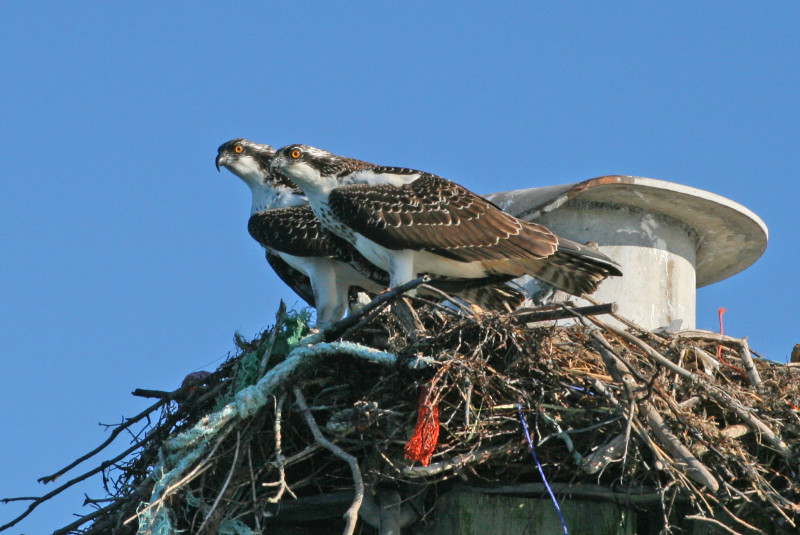
Ospreys return from their southern wintering grounds each spring. These big raptors are easily spotted along Buzzards Bay’s coast. (Image: Bill Fihlman)
The annual return of the osprey signals the true beginning of spring for many outdoor lovers in our region. Ospreys are easy to spot: These big, brown-and-white hawks are often seen soaring over rivers, salt marshes, shorelines, and the Bay’s open waters. Listen for their call—a high-pitched, chirping whistle—and look out for their large waterfront nests, where they raise their young through the summer.
1. Westport is home to one of the most significant populations of osprey and Allen’s Pond Wildlife Sanctuary is an excellent place from which to see osprey overhead. Paddlers can launch a canoe or kayak from Hix Bridge Landing and paddle downstream toward osprey platforms located among the marshes on the East Branch of the Westport River.
2. The short trail at the Sippican Lands Trust’s Brainard Marsh in Marion leads past wetlands to the sandy shores of the Weweantic River, where you’ll find an osprey platform ready to serve as home for nesting osprey and their young.
3. Wildlands Trust’s Great Neck Conservation Area in Wareham features a variety of habitats along its four miles of trails. Head to the salt marshes, where osprey as well as egrets and heron, are a common sight.
River herring start their run home
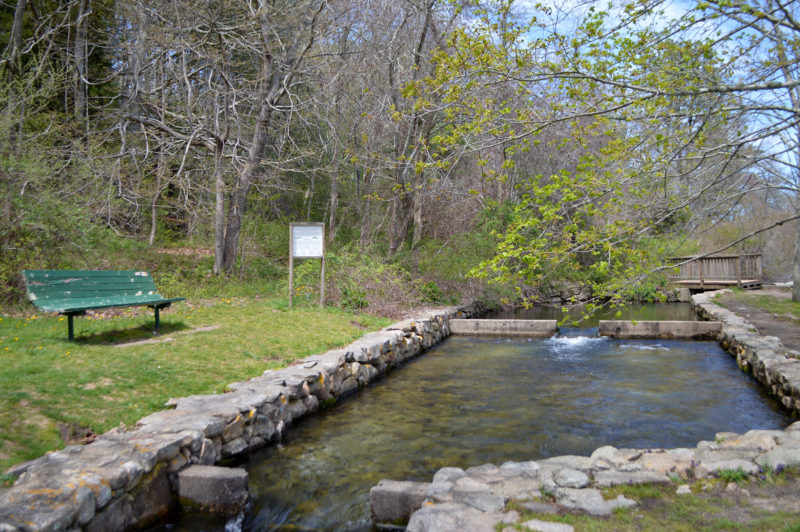
Carter Beal Conservation Area has a small footbridge across the Herring River at a fish ladder, where you might see river herring migrating upstream in spring on their way to Plymouth’s Great Herring Pond.
Local rivers and streams turn into freeways for migrating alewife and blueback herring – two species of fish that are more commonly known as river herring. If you’re lucky, you can spot schools of river herring in places like the Acushnet River, Agawam River, and Wankinco River, where they swim upstream to spawn in freshwater.
4. The Sawmill in Acushnet, which was restored by the Coalition with support from the National Oceanic and Atmospheric Administration (NOAA), features an innovative fishway that mimics the river’s natural form and allows river herring to migrate upstream, resulting in a significant increase in herring in the Acushnet River.
5. Next to the Wareham Elks Lodge, the Agawam River herring run is an active fish ladder where the Coalition monitors river herring. Between the fish swimming up the ladder and osprey above waiting to catch them, this location will not disappoint. Just a mile away, paddlers can launch from Whitlock’s Landing to cruise one of the most abundant herring runs on Buzzards Bay.
6. At the Carter Beal Conservation Area in Bourne, a small footbridge crosses the river at the fish ladder, where you might see herring migrating upstream in spring on their way to Plymouth’s Great Herring Pond. Downstream, you will find another spot to spy herring at the fish ladder at the Herring Run Recreation Area.
Vernal pools come to life
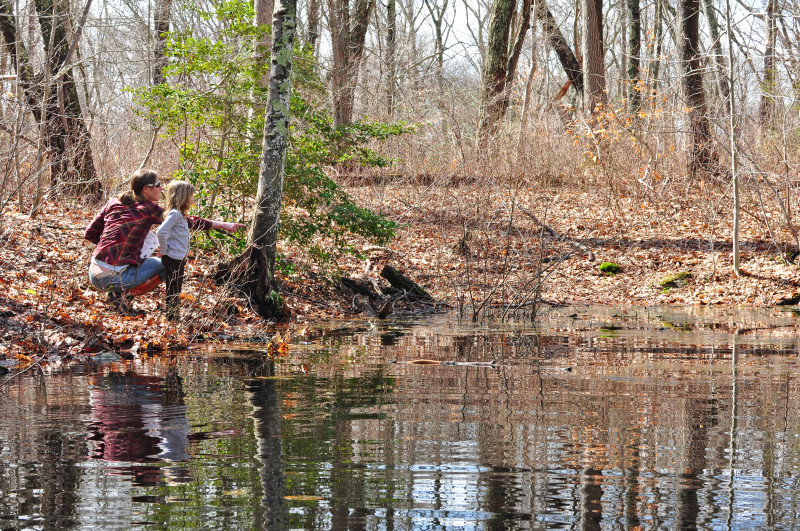
Discover a spring vernal pool at Parsons Reserve in Dartmouth.
If you see a shallow woodland pond in the spring, you may be looking at a vernal pool, a temporary body of water that will dry out in the heat of the summer. While vernal pools are ephemeral, they are essential breeding grounds for amphibians, such as wood frogs and spotted salamanders. Before approaching the pool, stop and listen for the sound of frogs and peepers, especially in the later part of the afternoon. When you get close, you may see translucent egg masses, floating free in the water or attached to vegetation in the water.
7. Hike to the northernmost spot of Westport Woods Conservation Park to find a certified vernal pool. Along the way you’ll pass a variety of other habitat, including grasslands popular with ground-nesting birds in the front fields.
8. The City of New Bedford’s Flora B. Peirce Nature Trail is the perfect spot for a short adventure to a vernal pool, from the reserve’s Falmouth Street parking area.
9. Fairhaven’s Little Bay Conservation Area is home to at least three vernal pools, located just off the Little Bay extension of the Phoenix Bike Path. The easiest to find is just before the wind turbine, at the intersection of the bike trail and the dirt road.
10. It’s easy to find the vernal pool at the Shoolman Preserve in Rochester. The Rochester Land Trust property has a sign that points the way. It’s just off the path that leads to a wild view of the Mattapoisett River.
11. The 300 Committee created five shallow depressions at its Breivogel Ponds Conservation Area in Falmouth that now serve as vernal pools. In addition to the more common species, rare spadefoot toads have been observed here.
Woods and wetlands green up
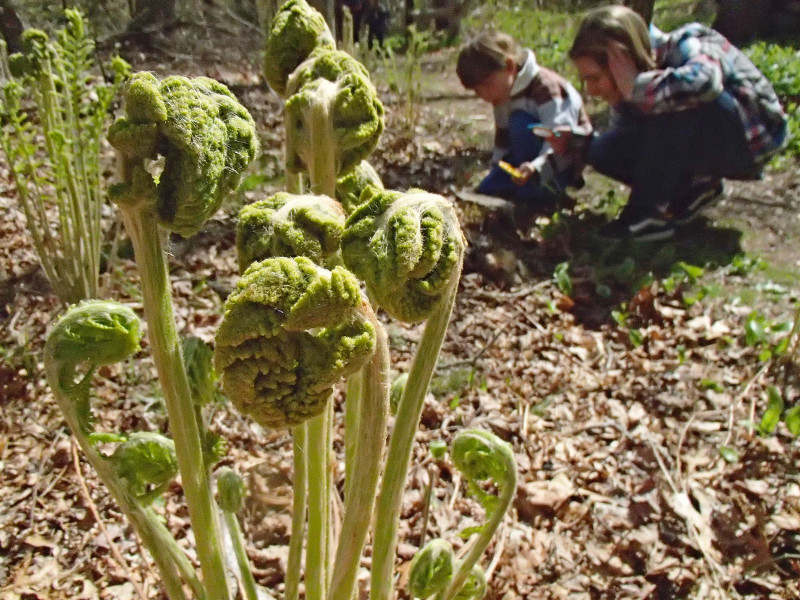 The serene austerity of the woods in winter will slowly fade as the sunlight warms up the land, inspiring plants and animals to stir. Already, tree tops appear blush with red, shoots of green are poking through the leaves, and streams are running with renewed vigor. Greener days are coming.
The serene austerity of the woods in winter will slowly fade as the sunlight warms up the land, inspiring plants and animals to stir. Already, tree tops appear blush with red, shoots of green are poking through the leaves, and streams are running with renewed vigor. Greener days are coming.
12. The Trustees Copicut Woods offers a fascinating place for a spring walk. Follow the Shockley Trail to find two vernal pools just off the path and then turn on to the Soggy Bottom trail where you will find harbingers of spring such as skunk cabbage, sending brilliant green leaves up out of the wetlands.
13. Fiddlehead ferns sprout along the New Boston Trail in Fairhaven. You are also likely to see other spring plants shooting up in the wetlands along the trail, which makes extensive use of bog boards to traverse the soggiest ground.
14. On Martha’s Vineyard, you will find a wide variety of uncommon plants blooming in the spring at West Chop Woods. The property owned by the Sherrif’s Meadow Foundation is just a mile outside Vineyard Haven and harbors a wealth of lady’s slippers as well as pale pink mayflowers, both of which bloom in spring.
Stripers return to the Bay, hungry
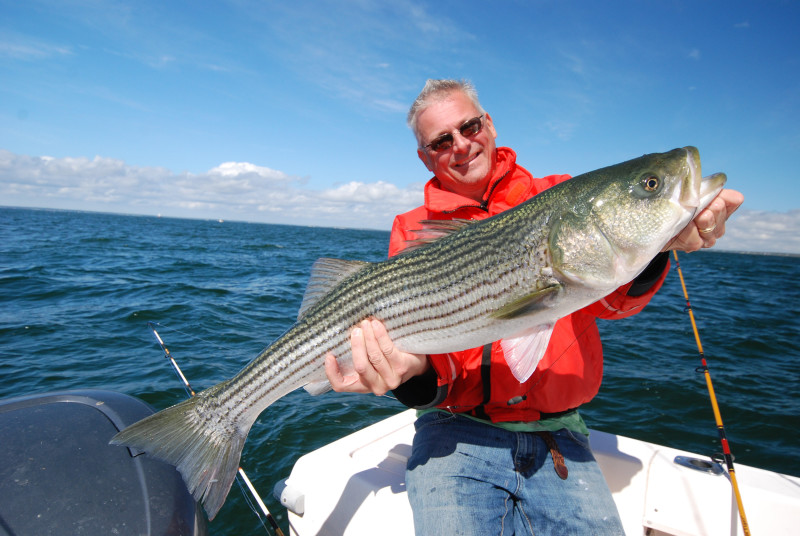
(Image: Tom Richardson/New England Boating)
As the Bay’s waters warm, stripers and other sportfish begin to return to our shores, chasing smaller fish, such as river herring, shad, and menhaden. If you already have your recreational saltwater permit, you can head to any number of good fishing spots around the Bay, or launch a boat to cruise to a favorite location on the water. There are dozens of favorites; here are a few to try.
15. The fishing pier and rocky shoreline at Fort Taber Park provides casting access to the mouth of New Bedford Harbor, where stripers and tautog start running in spring. You can also launch from the nearby East Rodney French Boulevard boat ramp to reach excellent fishing spots like Great Ledge just offshore.
16. In Falmouth, Old Silver Beach is the place to go surfcasting for stripers. Hungry stripers follow herring migrating toward the tidal creek just behind the beach. Don a pair of waders and walk out to the sandbars to cast in the surf.
17. Quicks Hole is a narrow strait between Nashawena and Pasque islands in the Elizabeth Islands chain–-and it’s also a major destination for anglers in Buzzards Bay. Swift currents sweep small fish through this passage between the Bay and Vineyard Sound as the tide moves in and out. This funnel effect attracts stripers, tautog, and blues starting in spring.